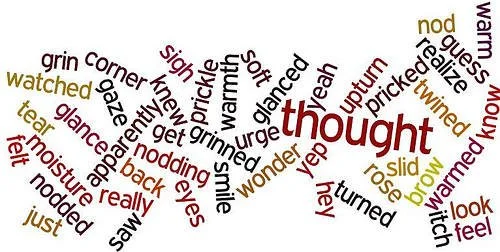The Art Of Storytelling - Spoken and In Print
Last night I had a virginal experience - I attended my first ever night of Storytelling. And no I wasn't one of the brave souls standing onstage, I was in the audience, front and centre in fact which I did find more than a little confronting to begin with but as the evening warmed up and the stories rolled out I forgot my proximity to the teller and became lost in the stories.Well, some of them that is.Which brings me to the point of this blog. A story is a story is a story and whether it's told in voice or on the page there are certain things needed to make it memorable. Some of the stories I listened to - and watched being told - last night had these elements but others didn't.What elements am I talking about?
(Word Image Courtesy of Char Newcomb)
For starters, a story needs a strong hook, something to grab the audience and make them want to keep listening. if our mind starts to wander after the first page or, in the spoken version, if we start wondering what's for dessert when the introduction is barely done, then the hook hasn't grabbed us enough.There needs to be a definite story arc - an initial problem followed up by a series of complications and turning points, building up to some sort of climax and then a resolution or denouement that leaves the reader/listener feeling satisfied. If the story problem isn't clearly established and the complications don't escalate the drama of the story, again there's the risk of the reader switching off (or watching the crowd rather than the teller as I found myself doing!) While tangents can be highly entertaining there should always be a through line that the main story follows and there should be an obvious end to the story rather than just a slow dying away of events. Stories that ramble and have no clear beginning and end tend to leave us cold. Emotional connection is crucial. Of the storytellers I saw last night the ones that drew me in had a strong emotional connection to the story. In most cases the events had happened to them, they were relating incidents that had lasting impacts on their lives. Of course when we write fiction we are imagining the events but the same principle applies - the writer needs to be emotionally invested in the story. We need to care about our characters and what happens to them as if they are members of our family, as if they are us. Only then can we feel what they are feeling and only then can the reader relate to our story. One of the storytellers had tears in her eyes as she spoke and her emotional connection to the tale she was telling certainly drew me in.Essential to our enjoyment of the story is the way it is told. In live performances the individual voice is easy to detect. Some still draw us in more than others as with written voices, depending on the choice of words, the use of pauses and asides and the inclusion (or not) of humour. In live storytelling there is also that indefinable ingredient called presence - the aura the storyteller has on the stage and their willingness to engage with the audience.I am deeply in awe of anyone who is willing to get up in front of a live audience and share their stories. But I do think they need to be just as aware of the essential elements of a good story as a writer is. The growing popularity of this live art form provides a fantastic avenue for more and more people to share their stories with audiences. If you haven't been to a storytelling event I highly recommend it.If you have been to one, what did you think?What are your experiences as a teller or an audience member?
Emotional connection is crucial. Of the storytellers I saw last night the ones that drew me in had a strong emotional connection to the story. In most cases the events had happened to them, they were relating incidents that had lasting impacts on their lives. Of course when we write fiction we are imagining the events but the same principle applies - the writer needs to be emotionally invested in the story. We need to care about our characters and what happens to them as if they are members of our family, as if they are us. Only then can we feel what they are feeling and only then can the reader relate to our story. One of the storytellers had tears in her eyes as she spoke and her emotional connection to the tale she was telling certainly drew me in.Essential to our enjoyment of the story is the way it is told. In live performances the individual voice is easy to detect. Some still draw us in more than others as with written voices, depending on the choice of words, the use of pauses and asides and the inclusion (or not) of humour. In live storytelling there is also that indefinable ingredient called presence - the aura the storyteller has on the stage and their willingness to engage with the audience.I am deeply in awe of anyone who is willing to get up in front of a live audience and share their stories. But I do think they need to be just as aware of the essential elements of a good story as a writer is. The growing popularity of this live art form provides a fantastic avenue for more and more people to share their stories with audiences. If you haven't been to a storytelling event I highly recommend it.If you have been to one, what did you think?What are your experiences as a teller or an audience member?

